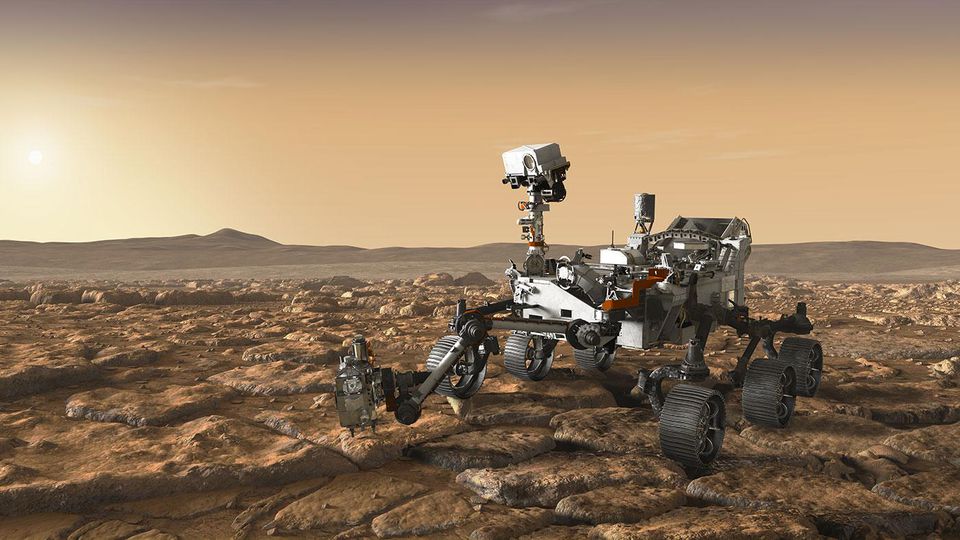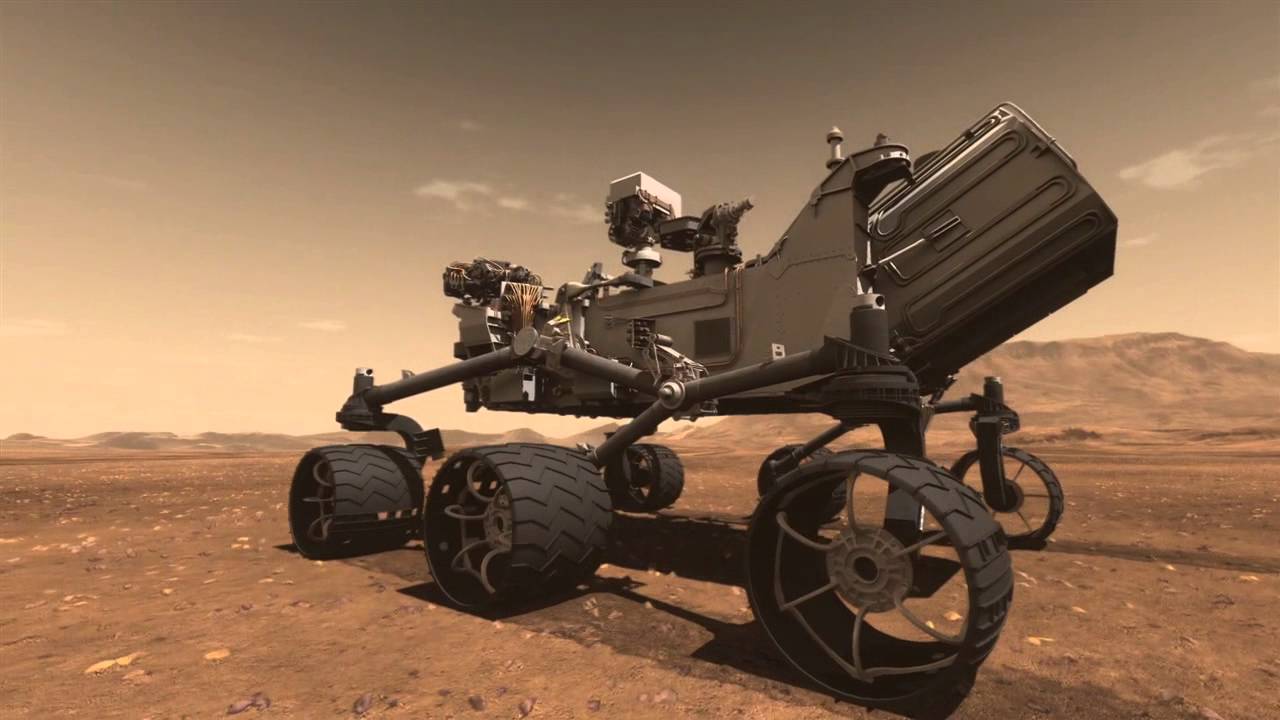
The rover Curiosity continues to explore Mars and
delight us with new data about it. Now the rover carried out a chemical analysis of the sediments in the Gale crater, which appear to be lacustrine. NASA reports that the results of the analysis confirmed what scientists had suspected for a long time: the rocks of the Red Planet are rich in organic matter. In particular, they contain aromatic and aliphatic hydrocarbons and
thiophenes .
The results of the work of Curiosity scientists published in the authoritative scientific publication Science. The article says, in particular, that the age of the detected organic matter is approximately 3.5 billion years. How organics formed on Mars is not yet completely clear, so scientists make different assumptions.
Rover helped specialists to get a huge amount of data about Mars. In particular, he discovered silicate sand deposits in the same crater, which is a direct indication of the existence of liquid water in the past of Mars. True, these traces are ancient - the water on Mars existed about 2.3 billion years ago.
The analysis of the same deposits showed the presence of organic substances. Traces of chlorobenzene and several chlorinated alkanes were found among other compounds. These are the results of earlier studies, and then the scientists were unable to determine the age of the compounds and their possible source.
Now received new information. A joint team of scientists from the United States, Mexico, the United Kingdom and France conducted a chemical analysis of sedimentary rocks, which were taken at two points of the Murray formation in the Pahrump Hills. The basis of these rocks, whose age is more than 3.5 billion years, are sulphates, iron oxide, phyllosilicates. Most likely, in the region that scientists examined, there was a lake earlier, so experts came to the conclusion that organic matter could be accumulated here. And indeed - scientists were not mistaken, there are many traces of organic compounds.
The analysis was performed using methods such as mass spectrometry and gas chromatography. Soil samples from the region of interest to scientists were subjected to high-temperature pyrolysis (temperature ranged from 500 to 820 degrees Celsius). The analysis was carried out by the rover itself using a specific set of tools.

Already the primary results of gas analysis showed that Mars deposits contain a large amount of sulfur-containing compounds, including thiophene (C
4 H
4 S), 2- and 3-methylthiophenes (C
5 H
6 S) and methanethiol (CH
4 S). Perhaps there are traces of other organic molecules, but the peaks of the spectrum, indicating the presence of one or another substance, are in this case rather weak. So, to draw conclusions about the presence of other compounds, unfortunately, is not yet possible.
But the presence of sulfur-containing organic matter is a proven fact. In addition, the mixture contains inorganic gases, which include hydrogen, sulfur, carbon and oxygen. But there was no molecular hydrogen here, no matter how hard scientists tried to find it.
Among other things, the rover was able to detect in the gas mixture a pair of benzene, toluene, chlorobenzene and, possibly, several alkyl benzenes of the composition C
8 H
9 at once. After searching for nitrogen (also one of the indirect signs of the existence of life), scientists were unable to confirm or deny its presence in samples. Unfortunately, in most cases, the presence of various kinds of compounds in the analyzed rocks was able to get an idea only indirectly. There are many questions that scientists have to find answers to.
As for sulfur-containing molecules, the authors explain this fact by the resistance of substances to external influences. At the same time, experts suggest that the detected compounds may be part of something more complex. At the same time, the tools of knowledge familiar on Earth cannot be used - after all, there are no people on the Red Planet. There are only a few vehicles launched a few years ago from Earth.
As for the origin of organic matter, neither geological nor biological sources can be excluded. It may well be that organic matter came to Mars along with the meteorite / meteorites, although this is only a guess.
Thanks to the apparatus, working on the surface of Mars now and working there earlier, scientists were able to detect methane in the atmosphere of the Red Planet. The mechanism of its appearance, scientists have not yet been able to figure out, but it may well be that methane in the case of Mars is just a product of the collapse of gas clathrates, which are under the surface of the planet.